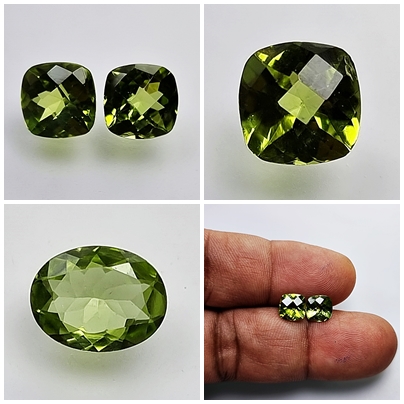Peridot: The Gemstone of Sunshine and Healing
Introduction:
Peridot, with its vibrant green hues and rich history, has enchanted civilizations for centuries. This captivating gemstone, known for its beauty and metaphysical properties, holds a special place in the world of gem enthusiasts. In this comprehensive guide, we delve into the origins, characteristics, and an array of benefits associated with peridot, shedding light on its enduring appeal and significance.
Origins and Characteristics:
Peridot, also known as olivine, is a silicate mineral composed of magnesium, iron, and varying trace elements. Its distinctive green color is derived from the presence of iron, ranging from yellow-green to olive-green tones. Peridot forms deep within the Earth’s mantle and is brought to the surface through volcanic activity or found in meteorites.
Renowned for its exceptional clarity and brilliance, peridot exhibits a vitreous luster and often displays a high degree of transparency. It is a relatively durable gemstone, ranking 6.5 to 7 on the Mohs scale of hardness, making it suitable for a wide range of jewelry applications.
Historical Significance:
Peridot boasts a rich history dating back thousands of years. Ancient Egyptians referred to it as the “gem of the sun” and believed it protected wearers from evil spirits and nightmares. Cleopatra was said to have adorned herself with peridot jewelry, associating it with beauty and power.
In ancient times, peridot was mined on the Egyptian island of Zabargad (now known as St. John’s Island) in the Red Sea. These deposits yielded some of the finest peridot specimens in the world, prized for their intense green color and exceptional clarity.
Metaphysical Properties:
Peridot is revered for its metaphysical properties, which are believed to promote emotional well-being, prosperity, and spiritual growth. As a heart chakra stone, peridot is associated with love, compassion, and harmony. It is said to open the heart to joy and abundance, fostering a deep sense of gratitude and contentment.
Peridot’s bright, uplifting energy is thought to alleviate stress, anxiety, and negative emotions, promoting inner peace and relaxation. It is said to encourage confidence, courage, and assertiveness, empowering individuals to pursue their dreams and goals with determination.
Healing and Wellness Benefits:
In addition to its metaphysical attributes, peridot is believed to offer a range of healing and wellness benefits. It is said to have a detoxifying effect on the body, supporting liver and kidney function and aiding in the elimination of toxins. Peridot is also thought to promote digestive health and alleviate symptoms of indigestion and bloating.
Furthermore, peridot is believed to enhance vitality and energy levels, making it a valuable ally for those experiencing fatigue or lethargy. It is said to stimulate the metabolism and promote overall well-being, supporting the body’s natural healing processes.
Peridot is also associated with the eyes and vision, believed to strengthen eyesight and alleviate eye strain. In traditional healing practices, peridot has been used to treat various eye disorders and promote ocular health.
Practical Applications:
Beyond its metaphysical and healing properties, peridot is prized for its aesthetic appeal and versatility in jewelry design. Its vibrant green color adds a pop of color to any ensemble, making it a popular choice for rings, earrings, pendants, and bracelets. Peridot is often paired with yellow gold to enhance its warm, golden-green hue, creating stunning pieces that evoke the beauty of nature.
Conclusion:
Peridot stands as a symbol of sunshine, vitality, and renewal, captivating enthusiasts with its radiant beauty and profound metaphysical properties. From its ancient origins to its modern-day applications, peridot continues to inspire awe and admiration in all who encounter its luminous presence. Whether cherished for its historical significance, metaphysical attributes, or aesthetic appeal, peridot remains a timeless gemstone cherished for its timeless allure and transformative energy.





